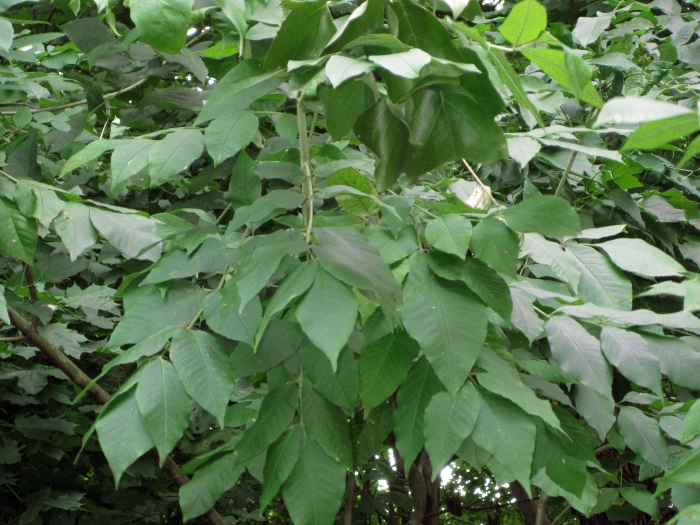White Ash
(Fraxinus americana)
White Ash (Fraxinus americana)
/
/

Virens (Latin for greening) from South Royalton, Vermont, USA
CC BY 2.0
Image By:
Virens (Latin for greening) from South Royalton, Vermont, USA
Recorded By:
Copyright:
CC BY 2.0
Copyright Notice:
Photo by: Virens (Latin for greening) from South Royalton, Vermont, USA | License Type: CC BY 2.0 | License URL: https://creativecommons.org/licenses/by/2.0 | Uploader: MPF | Publisher: Wikimedia Commons | Title: Fraxinus_americana_-_White_Ash_leaves,_New_York_1.jpg | Notes: pattypan 22.03 |




































































Estimated Native Range
Summary
Fraxinus americana, commonly known as White Ash, is a deciduous tree native to eastern North America, particularly the Eastern United States. It is often found in mesic hardwood forests, often alongside species such as sugar maple. White Ash typically grows to 60-80 feet (18-24 meters) in height and 40-50 feet (12-15 meters) in width, with a straight, tall trunk and a rounded crown. The leaves are compound with 5-9 leaflets, and their undersides have a whitish, glaucous appearance, which gives the tree its common name. The foliage turns shades of yellow to deep purple and maroon in autumn, providing seasonal interest.
White Ash is valued for its strong wood, used in making baseball bats, furniture, and other products. It is also planted for its aesthetic appeal in urban and residential settings, and its fall coloration is particularly notable. This species requires full sun to grow well and prefers moist, well-drained soils. It is relatively tolerant of urban pollution and is often used in street plantings and public landscapes. However, White Ash is under threat from the emerald ash borer, an invasive beetle that can kill the tree within a few years of infestation. Due to this pest, planting White Ash is now discouraged in areas where the borer is present.CC BY-SA 4.0
White Ash is valued for its strong wood, used in making baseball bats, furniture, and other products. It is also planted for its aesthetic appeal in urban and residential settings, and its fall coloration is particularly notable. This species requires full sun to grow well and prefers moist, well-drained soils. It is relatively tolerant of urban pollution and is often used in street plantings and public landscapes. However, White Ash is under threat from the emerald ash borer, an invasive beetle that can kill the tree within a few years of infestation. Due to this pest, planting White Ash is now discouraged in areas where the borer is present.CC BY-SA 4.0
Plant Description
- Plant Type: Tree
- Height: 20-40 feet
- Width: 20-30 feet
- Growth Rate: Moderate
- Flower Color: N/A
- Flowering Season: Spring
- Leaf Retention: Deciduous
Growth Requirements
- Sun: Full Sun, Part Shade
- Water: Medium
- Drainage: Fast, Medium
Common Uses
Bee Garden, Bird Garden, Butterfly Garden, Deer Resistant, Drought Tolerant, Fire Resistant, Rabbit Resistant, Salt Tolerant
Natural Habitat
mesic hardwood forests, often alongside species such as sugar maple
Other Names
Common Names: American Ash , Weiß-Esche , Amerikaanse Es , Vitask , 미국물푸레
Scientific Names: Fraxinus americana , Fraxinus albicans , Fraxinus americana var. biltmoreana , Fraxinus biltmoreana , Fraxinus americana var. americana , Fraxinus biltmoreana var. subcoriacea , Fraxinus juglandifolia , Fraxinus americana var. microcarpa , Fraxinus epiptera , Fraxinus americana var. juglandifolia
GBIF Accepted Name: Fraxinus americana L.